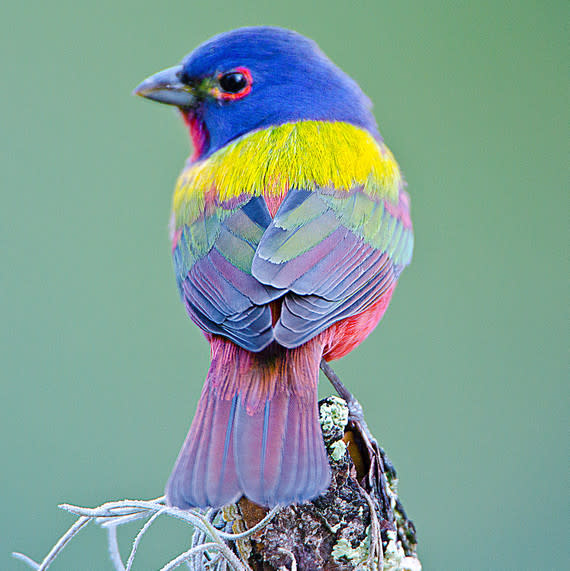Modern Day Bird Watching Is Quietly Becoming a Big Deal

Two falls ago, crowds flocked to Brooklyn, but not to try the latest food craze or get tickets to the hottest show. Instead, all eyes were trained on a single vibrant male painted bunting, a member of the finch family, which had detoured far off course. The fact that he was such a long way from home made the rare sighting all the more exciting. “Birding brings the joy of discovery and surprise,” says John Rowden, an ornithologist and director of community conservation at the National Audubon Society. “You don’t know what you’re going to see, but you’ll find something every time.”
Spring is ideal for birding, adds Rowden. “It’s when birds mate and begin their migration north, so you’ll get a larger number of different species passing through.” Decked out in their breeding plumage, they’re more colorful and active than at other times of the year, and warblers are singing their spring songs. They are also especially visible now, since they’re arriving before trees have filled in with leaves. “The easiest way to learn is to go with an experienced birder,” says Rowden. You can hook up with a group through your local Audubon chapter (audubon.org), but you can also go it alone. There are just a few things to know.
Travel Light
Birding doesn’t require a lot of equipment, just a field guide and binoculars. Most birders use one of two standard guidebooks. Peterson Field Guide to Birds of North America (Houghton Mifflin Harcourt, 2008) is a time-tested classic. But for additional information, such as different views, distinguishing marks, and information on behavior, pick up The Sibley Guide to Birds (Knopf, 2014).
If you don’t want to carry a book around, download an app. iBird Pro Guide to Birds ($15) provides illustrations and photos, as well as bird calls and a range map. You can also filter results by your location, the bird family you’ve spotted, and time of year to narrow down the identifica- tion process. The free eBird app, a joint effort from the Cornell Lab of Ornithology and the National Audubon Society, is an online database for birders around the world. Search for a specific type, locate where others are looking on any given day, and upload what you’ve seen, which helps conservationists keep track of bird counts.
“And you don’t need to spend a lot of money on binoculars,” Rowden says. When choosing a pair, two numbers matter: the amount of magnification and the aperture, which translates to brightness. Rowden suggests a pair with 8x magnification and 40 or 42 aperture, and recommends the brand Eagle Optics (eagleoptics.com) for general use.
Listen Up
Set out at the beginning or end of the day, when many birds are searching for food and tend to be most active. (Any natural area, even your yard, will do.) Look carefully for movement, and listen for calls. Spotting and identifying can be tricky at first, but with practice it becomes easier. If you’re new to binoculars, focus on a fixed spot in the distance. Then, without averting your gaze, bring the binoculars up to your eyes. Once you have a bird in your sights, pause to study it before you try to ID it in a guide. Describe it to yourself in detail, noting its size and shape; the color pattern of its head, wings, and tail; and what its bill looks like. Think about its habitat and behavior: Is it in a field, or in the woods? Is it feeding on the ground, or high in the trees? Then log or sketch what you see in a notebook or app, if you like.
Welcome Them
Bring the birds to you by growing native plants at home. Not only will you get to enjoy them in your own yard, but you will also increase their habitats, which are being destroyed by development and climate change. The Plants for Birds feature on Audubon’s website makes it a snap, whether you have acres of garden or a few containers on a patio. Plug in your zip code and the site will suggest native plants to grow in your area and list the species they’ll attract. Why are native plants important? “Regardless of what birds eat as adults, 96 percent of babies of terrestrial birds eat insects,” says Rowden. “A native oak species can host more than 500 species of caterpillars, while a nonnative species, like a ginkgo, can host just four.” So create a bird buffet in your backyard. If you grow it, they will come.
